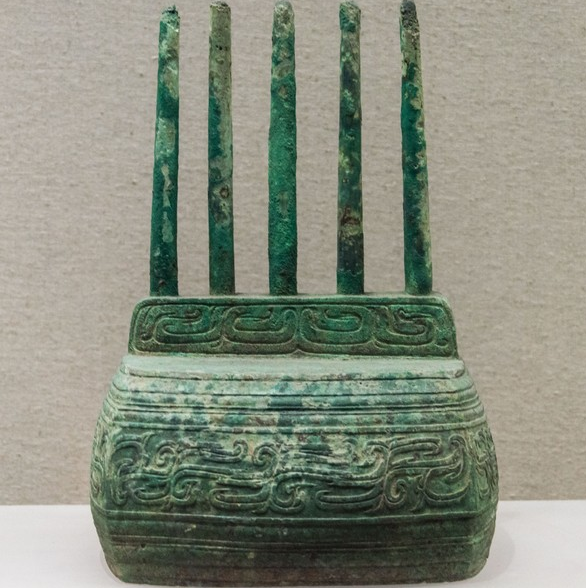An article about a router-like artifact in ancient China recently went viral online, Chinanews.com reported.
据中国新闻网报道,一篇有关一件酷似路由器的中国古代文物的文章在网上热传。
This unique bronze ware features five round columns standing on a square base at an equal distance between each other, strongly resembling a Wi-Fi router with five tentacles in the eyes of modern people. Some net users even nicknamed it the "West Zhou Dynasty router."
这个独特的青铜器上有五根圆柱,分列于长方形的基座上,距离互等,在现代人的眼中看来,酷似无线路由器。有些人甚至将其称为“西周路由器”。
This 31-centimeter-high piece unearthed in 1959 can be dated back to the West Zhou Dynasty, over 3,000 years ago.
这个31厘米高的文物于1959年出土,可追溯到3000年前的西周时期。
The national-level cultural relic and national treasure is housed in central China's Anhui Museum.
这件国家级的文物、国宝目前藏于中国中部的安徽博物院。

According to the museum's website, no clues of its functions were found among scholars' records and literature about the "router-shaped ware."
据安徽博物院官网介绍,该“路由器状”的器具“不见于诸家著录,用途待考”。
No inscriptions, no literary records, or other similarly shaped pieces. It's even not officially named owing to these reasons.
没有铭文,没有文献记载,也没有其他类似文物作参考。因而它甚至连正式的名字也没有。
Early in 1959, the anonymous relic was excavated at a village in southern Anhui province near the Yangtze River, in what is now the Huangshan Airport.
早在1959年,这件无名的文物在安徽省南部一靠近长江的村庄出土。那里如今已成了今天的黄山市机场用地。
Earlier reports speculated that it might be a piece of instrument as five sticks stand for five notes. And some archeologists argued that it's a pipe holder.
之前的报道曾推测,这可能是一件乐器,五个柱代表五个音,而一些考古学家则认为它是一个管支架。
But these assumptions were later refuted as no instruments were unearthed in the tomb.
但这些假设后来都被否定了,因为墓中并未发现有任何乐器。
Some academic speculations still need evidence, said Li Yizhi, deputy director of Anhui Museum. And it's fine that some net users jokingly call it the "West Zhou Dynasty router" for entertainment.
安徽博物院副院长李益治表示,这些猜测仍有待佐证。有些网友戏称它为“西周路由器”,作为娱乐调侃一下也未尝不可。













